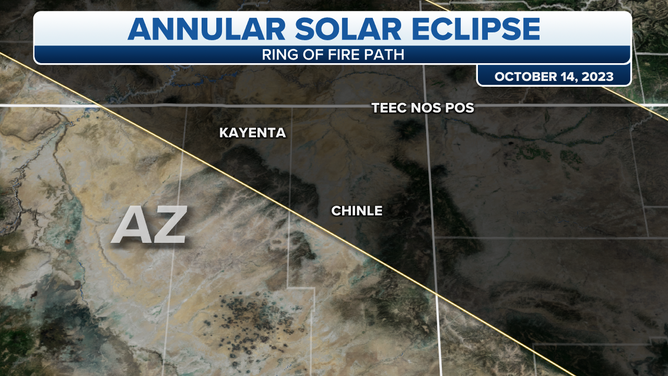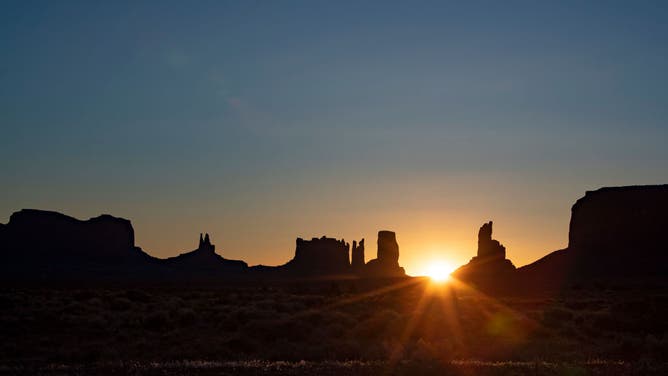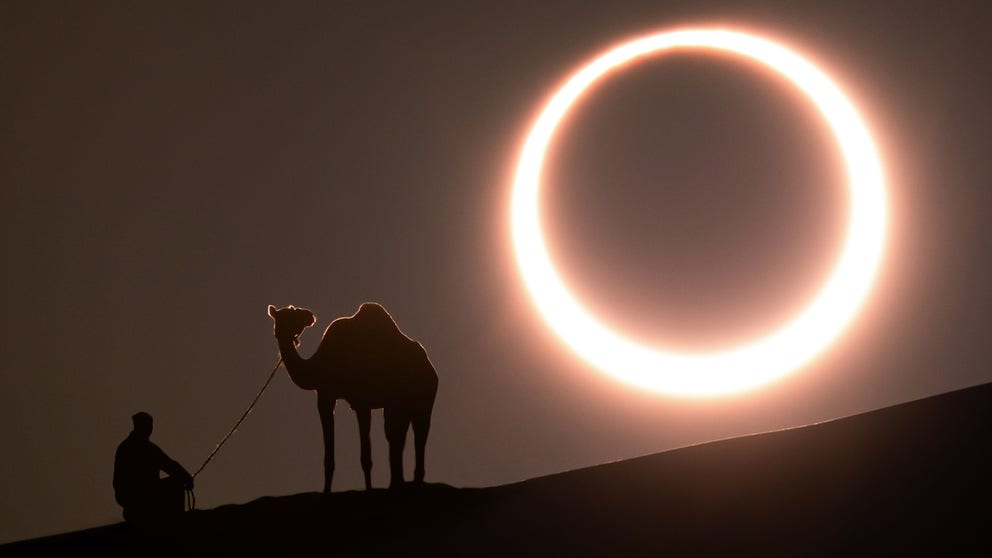Where to see 'ring of fire' in Arizona during October annular solar eclipse
Several Navajo Tribal Parks will be along the path of the 2023 annular solar eclipse, including Four Corners Monument and Monument Valley.
What is a solar eclipse? The different types and how they happen
During a total or annular solar eclipse, the moon passes in front of the sun and casts its shadow upon the Earth's surface.
CHINLE, Az. – Northeastern Arizona will be under the path of the Oct. 14 annular solar eclipse, making the "ring of fire" visible during the maximum eclipse.
Arizona is one of nine states along the path of the maximum eclipse, which stretches from Oregon to Texas on Saturday, Oct. 14, 2023. The peak solar eclipse in Arizona will be visible from the Navajo Nation, including the red sandstone buttes of Monument Valley.

The path of the Oct. 14 annular eclipse in Arizona.
(FOX Weather)
Here's what you need to know about viewing the 2023 annular solar eclipse in Arizona.
What is an annular eclipse?
An annular eclipse is not a total eclipse, as the Moon doesn’t entirely block the Sun’s light – only 90%. An annular eclipse happens when the Moon is at its farthest point in its orbit of Earth. During the maximum eclipse, the light from the sun peaks out around the Moon, creating the "ring of fire" the annular eclipse is known for.
UTAH'S CANYONLANDS NATIONAL PARK PREPARES FOR OCTOBER SOLAR ECLIPSE CROWDS
Unlike a total solar eclipse, you will need to wear special eclipse glasses during the entirety of the annular eclipse. Taking the glasses off at any point, even during the maximum eclipse, is unsafe.
Where can I see the 'ring of fire' in Arizona?
The Navajo Nation in Arizona will be along the path of the "ring of fire" on Oct. 14.
The maximum annular solar eclipse will be visible in Navajo County, as well as Kayenta and Chinle in Apache County.
Several Navajo Tribal Parks will offer breathtaking views to witness the eclipse, including the red sandstone buttes of Monument Valley.

File photo: Dawn breaks over sandstone formations at the Monument Valley Navajo Tribal Park on the Navajo Reservation on Sunday, May 24, 2020 in Oljato-Monument Valley, AZ. (Brian van der Brug / Los Angeles Times via Getty Images)
(FOX Weather)
Within the Four Corners Monument, the annular eclipse will be visible across four states simultaneously: Colorado, Utah, Arizona and New Mexico.
WHERE TO SEE 'RING OF FIRE' IN COLORADO DURING OCTOBER ANNULAR ECLIPSE
The area within Navajo Tribal Park will be open from 8 a.m. to 4:45 p.m. on Oct. 14, and the park entry fee is $8, according to the website.
If you are planning to see the eclipse from a Navajo Tribal Park, be sure to check the website for hours and visitor information.
When is the solar eclipse in Arizona?
The eclipse in the U.S. begins in Oregon at 8:06 a.m. PDT and the partial solar eclipse ends in southeastern Texas at 1:33 p.m. CDT.
In Arizona, the partial eclipse begins at 8:08 a.m. MST, and the maximum eclipse – when the "ring of fire" will be on display – starts at 10:29 a.m. MST and lasts about five minutes. The partial eclipse ends at 11:09 a.m. MST.
A partial solar eclipse will be visible in Phoenix, Flagstaff and the Grand Canyon National Park after 8 a.m. MST.
What will the weather be like in Arizona for the annular eclipse?
The FOX Forecast Center is tracking comfortable temperatures during the day with chilly mornings for eclipse viewers in Arizona.
SOLAR ECLIPSE FORECAST: SOUTHWEST LIKELY TO HAVE BEST VIEWING CONDITIONS FOR OCTOBER 'RING OF FIRE'
The forecast for the area calls for increasing sunshine as you head south and east with temperatures in the upper 60s and low 70s.
Moderate cloud cover is forecast near the Four Corners Monument.

(FOX Weather)
With the Southwest monsoon season wrapping up at the end of September, viewers should have a clear view of the solar eclipse.
